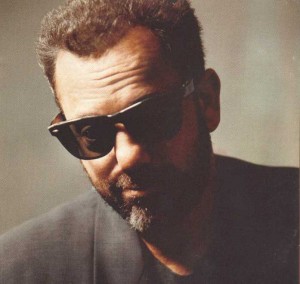
In this particular shot, Kovacs captures a lens flare from the setting sun. This lens flare and the numerous others in the film add a sense of realism to the movie, as if you were really there in that location with the sun shining into your eyes. The highway is also at the very center of the shot, blurring into the horizon in almost the exact center of the screen, which draws the viewer’s eyes down the road. The lines of the road create a sense of distance and evoke the notion of “travel” which is what this part of the scene is about.

This next shot is shot with the sun almost directly in front of the camera. This causes Wyatt and Billy to go almost completely black, since there is no backlight or fill being used. This shot conjures the image of “riding off into the sunset.”



These next shots are all short tracking shots. Like almost all of the other shots in the travel scenes, these shots have long depth of field which keeps the environment surrounding the characters as much in focus as the characters themselves. While it might be distracting in certain other situations, in Easy Rider the landscape is almost as important to the movie as Wyatt and Billy. These shots also add to that sense of realism that I feel Kovacs wanted to achieve by combining a long depth of field with the tracking shots. It makes the viewer feel as if they were actually travelling along with Wyatt and Billy instead of just watching them from some stationary point.



This is another tracking shot, this time with Wyatt and Billy in the frame. Even though they are in the frame however, there is a still a fairly long DoF. This is more of Kovacs’ attempt at making the movie seem real by making it seem as though the viewer is riding alongside them. The light in this shot is also coming from the side and onto their faces, making it seem as if they are riding towards some golden end.

This shot begins the final part of the final scene. The two characters are framed in an MCU so that we can see what type of people they might be, but the characters themselves are framing what our attention is really drawn to, the gun placed in the direct center of the screen. This serves as an ominous foreshadowing for the events immediately following.

This is a tracking shot from the POV of the truck, which establishes the relationship between Billy and the guys in the truck which is important for the following events.

One of the few shots that actually has a shallow depth of field. In this case, Kovacs uses it to draw our attention away from the scenery and to the redneck harassing Billy and the shotgun he now has pointed out of the window. This is also one of the few instances where a character in a closeup is not placed almost directly in the middle of the screen. This guy is placed on the left side, suggesting that he is “evil” (as if the shotgun wasn’t enough).


Immediately after the shots of the men in the truck, Kovacs reverts back to using the long DOF. Even though something dramatic has just happened, Kovacs does not choose to place all the emphasis on the characters, even when Wyatt is tending to his dying friend. Instead, Kovacs chooses to maintain the aspect of realism that has permeated the entire movie by showing the events as we would if we were actually there.

This scene is another one that uses lines to convey depth with a road, but this time attention is drawn to the overturned motorcycle in the middle of the road and frame. While the other similar scene evoked the promise and freedom of the road, this one contrasts it with the tragic events symbolized by the bike in the foreground



The scene and movie end with these shots portraying the tragic end to both characters travels. The final shot is a long aerial shot that ascends higher and higher over the scene that has just unfolded. This shot serves to “tie it all together” in that it is another shot where the environment is emphasized over the characters. Only this time, it serves to show how small the characters are in relation to everything around them.
Throughout this scene and the entire movie, the major mood or tone that I believe Kovacs was trying to establish was one of realism. He accomplished this by using long DOF and tracking shots to make it seem as though the viewer were seeing it as they would if they were actually there. It is also accomplished with the lighting throughout the movie, which is almost entirely natural. The characters are rarely placed in any sort of special lighting conditions, because doing so might give the film a sense of being “artificial.”






